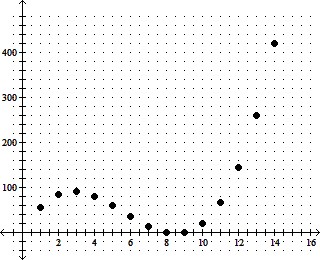Find f-1(x) for the following one-to-one function f.f = {(-7, 3), (-1, 1), (6, 2), (8, 4)}
A. f-1 = {(-3, 7), (-1, -1), (2, -6), (4, -8)}
B. f-1 = {(7, -3), (1, -1), (-6, -2), (-8, -4)}
C. f-1 = {(-3, 7), (-1, 1), (-2, -6), (-4, -8)}
D. f-1 = {(3, -7), (1, -1), (2, 6), (4, 8)}
Answer: D
You might also like to view...
Provide an appropriate response.Which one of the following ratios is not the same as 0.75?
A. 75 to 100 B. 3 to 4 C. 8 to 6 D. 0.750
Solve the problem.A charged particle of mass m and charge q moving in an electric field E has an acceleration a given by  where q and E are constants. Find
where q and E are constants. Find  .
.
A.  = -
= - 
B.  =
= 
C.  = qEm
= qEm
D.  = -
= - 
Solve the problem.Find the number of terms in the following arithmethic progression: -4, 3, 10, . . . , 157
A. 25 B. 24 C. 23 D. 22
Determine which of the following four functions might be used as a model for the data: linear:  quadratic:
quadratic:  quadratic:
quadratic:  polynomial, not quadratic or linear. IA Robotics
polynomial, not quadratic or linear. IA Robotics
 Year
Year
A. f(x) = ax2 + bx + c, a > 0 B. f(x) = mx + b C. Polynomial, not quadratic or linear D. f(x) = ax2 + bx + c, a < 0